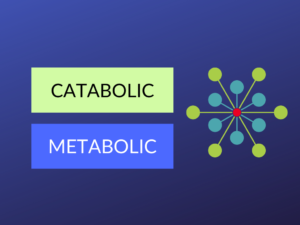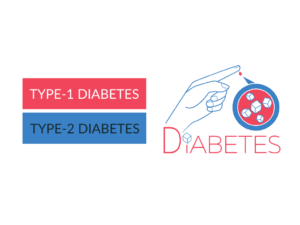Difference between Glycolysis and Gluconeogenesis
Introduction
Glycolysis and gluconeogenesis are two crucial metabolic pathways involved in the generation and utilization of glucose in living organisms. Although these processes appear to be opposite, they play complementary roles in maintaining glucose homeostasis. In this article, we will explore the differences between glycolysis and gluconeogenesis, their respective examples, uses, and conclude with a summary of the variations.
What is Glycolysis?
Glycolysis is a universal metabolic pathway that occurs in the cytoplasm of both prokaryotic and eukaryotic cells. It involves the breakdown of glucose into two molecules of pyruvate, accompanied by the generation of ATP and NADH. Glycolysis can be divided into two phases: the energy investment phase and the energy payoff phase.
Examples of Glycolysis
Some examples of glycolysis include:
1. Muscle cells during intense exercise: Glycolysis provides quick energy for muscle contraction.
2. Red blood cells: As they lack mitochondria, glycolysis is their primary source of energy.
3. Yeast fermentation: In the absence of oxygen, yeast cells undergo alcoholic fermentation through glycolysis.
What is Gluconeogenesis?
Gluconeogenesis is a metabolic pathway that occurs mainly in the liver and to a lesser extent in the kidneys. It involves the synthesis of glucose from non-carbohydrate precursors such as lactate, pyruvate, glycerol, and certain amino acids. Gluconeogenesis plays a vital role in maintaining blood glucose levels during fasting or prolonged exercise when glucose demand is high.
Examples of Gluconeogenesis
Some examples of gluconeogenesis include:
1. Liver cells: The liver is the primary site for gluconeogenesis, where it ensures a constant supply of glucose to other tissues.
2. Kidney cells: The kidneys contribute to gluconeogenesis during prolonged fasting or starvation.
3. Intestinal cells: During fasting, intestinal cells can undergo gluconeogenesis to meet local energy demands.
Differences between Glycolysis and Gluconeogenesis
| Difference Area | Glycolysis | Gluconeogenesis |
|---|---|---|
| Location | Occurs in the cytoplasm | Primarily occurs in the liver |
| Energy Investment | Requires ATP | Requires ATP and GTP |
| Biosynthetic Process | Catabolic pathway | Anabolic pathway |
| Substrates | Glucose | Non-carbohydrate precursors |
| Enzyme Regulation | Hexokinase and phosphofructokinase are regulated | Fructose-1,6-bisphosphatase and glucose-6-phosphatase are regulated |
| Occurrence | Occurs under normal physiological conditions | Occurs under fasting or starving conditions |
| Oxygen Requirement | Can occur both in presence and absence of oxygen | Requires an absence of oxygen |
| Involvement of Mitochondria | Does not require mitochondria | Requires mitochondria for specific reactions |
| Generation of ATP | Generates a small amount of ATP | Consumes ATP |
| End Product | Pyruvate | Glucose |
Conclusion
In summary, glycolysis and gluconeogenesis are metabolic pathways involved in glucose metabolism. Glycolysis breaks down glucose to provide energy, while gluconeogenesis synthesizes glucose to maintain blood glucose levels. They differ in their location, energy investment, substrate usage, regulation, occurrence, and end products.
Knowledge Check
1. In which cellular compartment does glycolysis occur?
2. Name a tissue where gluconeogenesis predominantly takes place.
3. Is glycolysis a catabolic or anabolic process?
4. What are the substrates for gluconeogenesis?
5. Which enzymes are specifically regulated in glycolysis?
6. Does gluconeogenesis occur in normal physiological conditions?
7. Does glycolysis require oxygen?
8. Does gluconeogenesis require mitochondria for all its reactions?
9. Does glycolysis generate or consume ATP?
10. What is the end product of gluconeogenesis?
Answers:
1. Glycolysis occurs in the cytoplasm.
2. Gluconeogenesis predominantly takes place in the liver.
3. Glycolysis is a catabolic process.
4. Gluconeogenesis utilizes non-carbohydrate precursors.
5. Hexokinase and phosphofructokinase are specifically regulated in glycolysis.
6. Gluconeogenesis occurs under fasting or starving conditions.
7. Glycolysis can occur both in the presence and absence of oxygen.
8. Gluconeogenesis requires mitochondria for specific reactions.
9. Glycolysis generates a small amount of ATP.
10. The end product of gluconeogenesis is glucose.
Related Topics
1. Difference between Glycolysis and Krebs Cycle: Exploring another important metabolic pathway.
2. Glucose Metabolism in Different Tissues: Understanding how glucose utilization varies across different organs.
3. Regulation of Glycolysis and Gluconeogenesis: Delving into the intricate regulation mechanisms of these pathways.



